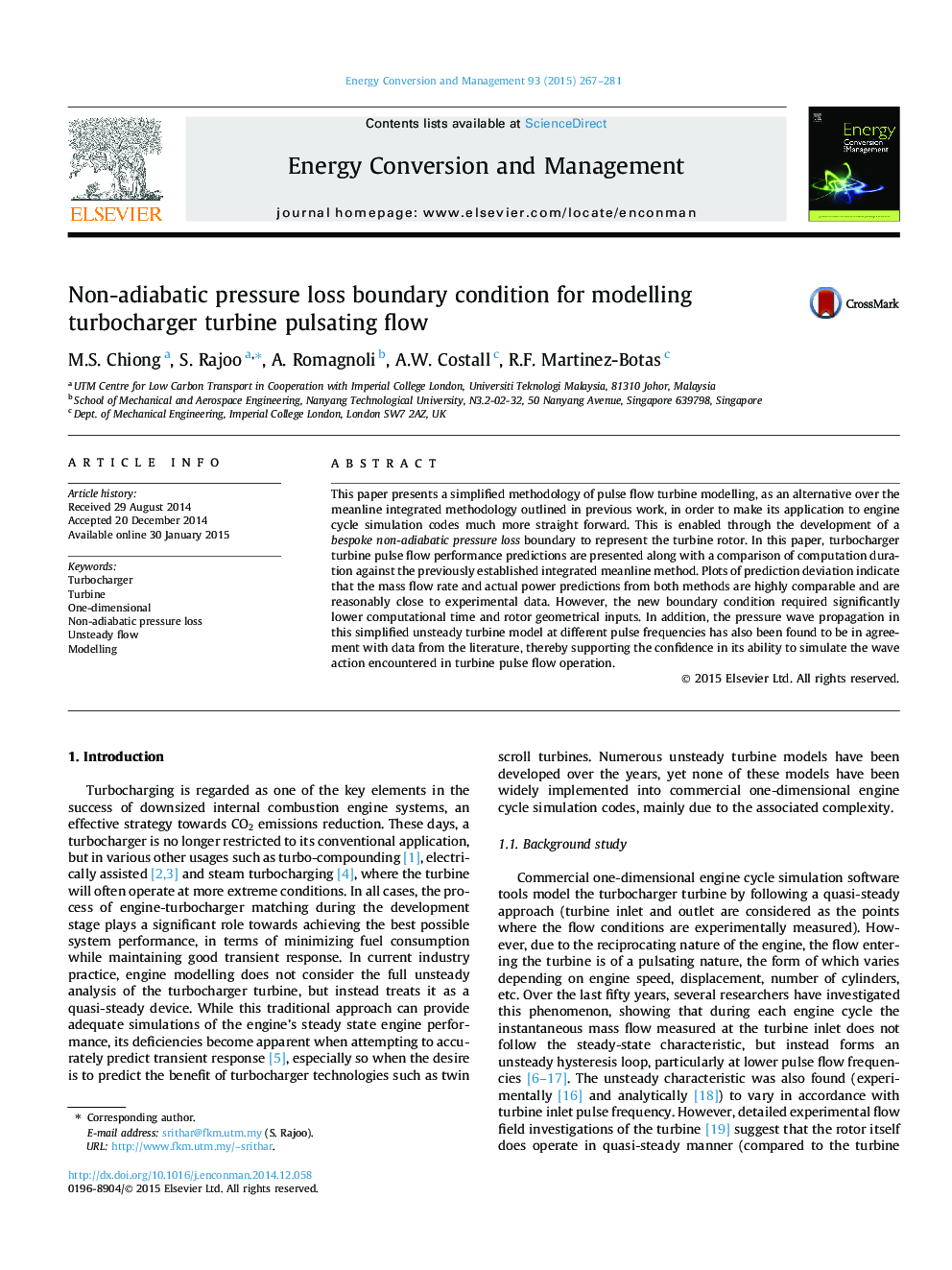| کد مقاله | کد نشریه | سال انتشار | مقاله انگلیسی | نسخه تمام متن |
|---|---|---|---|---|
| 7162948 | 1462869 | 2015 | 15 صفحه PDF | دانلود رایگان |
عنوان انگلیسی مقاله ISI
Non-adiabatic pressure loss boundary condition for modelling turbocharger turbine pulsating flow
ترجمه فارسی عنوان
شرط مرخصی از دست دادن فشار غیر آدیاباتیک برای مدل سازی توربوشارژر توربین تورم جریان
دانلود مقاله + سفارش ترجمه
دانلود مقاله ISI انگلیسی
رایگان برای ایرانیان
کلمات کلیدی
توربوشارژر توربین، یک بعدی، از دست دادن فشار غیر آدیاباتیک، جریان ناپایدار، مدل سازی،
ترجمه چکیده
این مقاله روش ساده ای از مدل سازی توربین های جریان پالس را به عنوان جایگزینی برای روش متداول متداول در کار قبلی ارائه می دهد تا کاربرد آن در کدهای شبیه سازی چرخه موتور را بسیار سریعتر به پیش برده باشد. این از طریق توسعه مرز تخلیه فشار غیر غیر آدیاباتیک به منظور نشان دادن روتور توربین امکان پذیر است. در این مقاله، پیش بینی عملکرد جریان توربوشارژر توربو شارژ همراه با مقایسه مدت زمان محاسبات با روش متداول متداول متداول پیشنهادی ارائه شده است. قطعه ای از انحراف پیش بینی نشان می دهد که جریان جرم و پیش بینی های قدرت واقعی از هر دو روش بسیار قابل مقایسه هستند و منطقی به داده های تجربی نزدیک هستند. با این حال، شرایط مرزی جدید نیاز به زمان های محاسباتی و ورودی های هندسی روتور را به طور قابل توجهی کاهش می دهد. علاوه بر این، انتشار موج فشار در این مدل توربینی ساده و غیرمتعارف در فرکانس های مختلف پالس نیز با داده های ادبیات سازگار بوده و در نتیجه حمایت از اعتماد به توانایی آن برای شبیه سازی موج اعمال شده در جریان جریان پالس توربین است.
موضوعات مرتبط
مهندسی و علوم پایه
مهندسی انرژی
انرژی (عمومی)
چکیده انگلیسی
This paper presents a simplified methodology of pulse flow turbine modelling, as an alternative over the meanline integrated methodology outlined in previous work, in order to make its application to engine cycle simulation codes much more straight forward. This is enabled through the development of a bespoke non-adiabatic pressure loss boundary to represent the turbine rotor. In this paper, turbocharger turbine pulse flow performance predictions are presented along with a comparison of computation duration against the previously established integrated meanline method. Plots of prediction deviation indicate that the mass flow rate and actual power predictions from both methods are highly comparable and are reasonably close to experimental data. However, the new boundary condition required significantly lower computational time and rotor geometrical inputs. In addition, the pressure wave propagation in this simplified unsteady turbine model at different pulse frequencies has also been found to be in agreement with data from the literature, thereby supporting the confidence in its ability to simulate the wave action encountered in turbine pulse flow operation.
ناشر
Database: Elsevier - ScienceDirect (ساینس دایرکت)
Journal: Energy Conversion and Management - Volume 93, 15 March 2015, Pages 267-281
Journal: Energy Conversion and Management - Volume 93, 15 March 2015, Pages 267-281
نویسندگان
M.S. Chiong, S. Rajoo, A. Romagnoli, A.W. Costall, R.F. Martinez-Botas,
